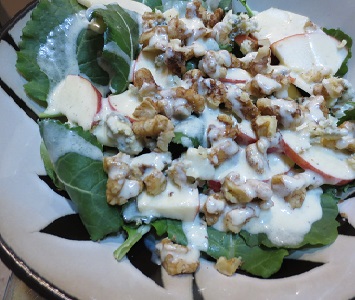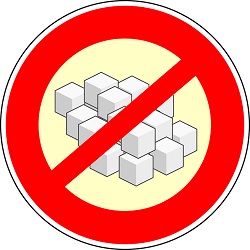
diet
Where are you on the food pyramid?

Resources list:
Don’t Kill the Birthday Girl* by Sandra Beasley, original copyright 2011.
Mindless Eating* by Brian Wansink, original copyright 2007
Peanut Allergy: Early Exposure is Key to Prevention by Dr. Francis Collins, director of the National Institutes of Health, 2017
*Amazon Affiliate link
A Book to Make You Think, “Hey, It Ain’t So Bad!”
I was irresistibly reminded of Laura Ingalls Wilder’s The Long Winter as the cascading news reports have been coming about the coronavirus. It’s so interesting to see the different sources that people are drawn to in responding to bad news. Some want to distance themselves, reading, watching and listening to material as far removed as possible from the real world.
And then there are people like me, who always find it consoling to say, “Well, other people have had it worse.” For some reason, I’m especially drawn to the last days of the Roman Empire. Hey, the Goths haven’t poured into the city, looting and burning! So we don’t have anything to complain about!! And, in concert with about 95 million other people, Jim and I re-watched the movie Contagion this past weekend. I must say, I have some serious issues about the plot, especially on a third watching. Society almost immediately descends into chaos and looting, but then, suddenly, as soon as there’s a vaccine, everyone is lining up perfectly to snort the stuff. (I have no plans to watch it a fourth time; that honor is reserved for Inception.)
Some Timeless Sensible Eating Advice–from 1934

Two recent interests have led me to the above source, and I’ll be developing these ideas in further posts. First, I’ve been struck over the past year or so about how important it is to keep your core muscles—your abdominals—pulled in. I realized at some point that I had gotten into the horrible habit of going around with my stomach pooching out. As soon as you allow that to happen, your whole body goes out of alignment. The stomach sticks out, the spine curves too much, the hips (ahem) stick out, and the shoulders and head poke forward. We tend to think that good posture involves throwing our shoulders back, but in reality our shoulders will just hang naturally straight if the rest of the body is carried properly. (And of course last week’s “Happier” podcast with Gretchen Rubin and Liz Craft was all about . . . posture. Once again the stars have aligned. Be sure and listen to that episode; I will just say that I have no intention of doing the exercises they recommend because I have a routine that works for me, but you may find their ideas helpful.)
So I’d been planning to do some videos showing the exercise routine I do and emphasizing the importance of
A Great New Salad Ingredient

Up until this past holiday season I prided myself that I’d never eaten any kale. It just seemed so trendily healthy, and it looked tough and unappetizing. I’d read that you needed to “massage” kale that was being used raw, a recommendation that further discouraged me from trying it. Here’s what the inimitable Deb Perelman said about kale on Smitten Kitchen way back in 2013: ““the world would be a better place if we could all stop pretending that kale tastes good.” But then she went on to rant and rave about a kale salad she’d had at a restaurant. (As has been said, by me and by others, if
Are the polyols a bunch of Polly-Wolly-Doodle?

Ho-kay. I’ve been diving down rabbit holes all over the place this morning as I try to come to some conclusions about these rather weird substances called “sugar alcohols” or “polyols,” with the most commonly used ones being sorbitol, xylitol, and erythritol. Can you just buy a bag of a powdered polyol and put it in the place of sugar in your pantry and your food? Is that change going to make you into the person of your dreams? Well, sigh, as is so often the case, the answer is no.
Glycemic Index Issues

I wrote an earlier post on the whole idea that sugar is sugar is sugar, dealing with maple syrup, honey, and molasses. At some point I want to write about more of these sweeteners, including agave nectar and brown rice syrup, so stay tuned for that. I also want to deal with what I call “sugaroids,” substances that contain sugar plus something else (alcohol! chlorine!) but since they are not “real” sugar, and since they contain fewer calories than sugar, items made with them can be labeled “sugar free.” This is the type of thing that, like so many other weird dietary ideas, makes me want to tear my hair out. But for now I want to talk about another hair-tearer: the infamous glycemic index. As you might guess (to quote my son when he was a toddler), “I don’t wike dat.” The whole idea is so misguided, and has led to so many people refusing to eat perfectly healthy food, that I think it’s worth a post. (And yes, it should be “healthful” food, but cut me some slack.)
Happy Halloween! (And How to Stay Away from the Candy)
 I have a podcast on my “favorites” list from Dr. Al Mohler, president of Southern Seminary, the flagship divinity school for the Southern Baptist Convention. I’ve heard him preach a number of times at our former church, Capitol Hill Baptist, which we attended from 1999 to our move here in 2009. He’s a great guy for whom I have great respect and is very much concerned about the direction our society is going, but sometimes this concern causes him to overreact a little. So back when the whole drag-queen story-hour brouhaha broke out (and if you missed out on that one, lucky you! I’m a committed David Frenchian on the subject), Dr. Mohler saw it as a “cultural crisis.” We all needed to Do Something About It. But the thing of it was, and is, that these events are local and non-compulsory. Giving so much attention to them vaulted the performers into the spotlight for weeks.
I have a podcast on my “favorites” list from Dr. Al Mohler, president of Southern Seminary, the flagship divinity school for the Southern Baptist Convention. I’ve heard him preach a number of times at our former church, Capitol Hill Baptist, which we attended from 1999 to our move here in 2009. He’s a great guy for whom I have great respect and is very much concerned about the direction our society is going, but sometimes this concern causes him to overreact a little. So back when the whole drag-queen story-hour brouhaha broke out (and if you missed out on that one, lucky you! I’m a committed David Frenchian on the subject), Dr. Mohler saw it as a “cultural crisis.” We all needed to Do Something About It. But the thing of it was, and is, that these events are local and non-compulsory. Giving so much attention to them vaulted the performers into the spotlight for weeks.
A Shocking Statistic, and Holding onto Accidental Weight Loss
 This morning on the “Happier” podcast Gretchen Rubin gave a truly shocking statistic:
This morning on the “Happier” podcast Gretchen Rubin gave a truly shocking statistic:
“Research suggests that Americans consume an astonishing 30% of their daily calories in the evening, after 8:00 p.m., and as the day wears on, we tend to choose increasingly unhealthy options.” (from the show notes for the 10/23/19 episode)
There’s some controversy about whether or not this evening snacking causes actual weight gain in and of itself; in other words, are calories consumed in the evening more likely to be stored as fat than those consumed during the day? According to Healthline, which I’ve found to be a pretty good online resource: “You won’t gain weight by merely eating later if you eat within your daily calorie needs. Still, studies show that nighttime eaters typically make poorer food choices and eat more calories, which can lead to weight gain.” As Gretch and Liz say in the podcast, you aren’t going to be eating celery sticks or scrambled eggs at 10:00 PM; you’ll be eating junk/snack/convenience food. (Liz mentions Cheez-Its.) Of course, one way to keep yourself from eating junk food at 10:00 PM is to not have the junk food in the house.
The Daniel Diet, Part 3–What Does the Bible Actually Say?

The whole idea of the Old Testament prophet’s being a health and wellness guru was given a bit of juice in January of this year when the superstar actor Chris Pratt announced on Instagram that he was going on a 21-day “Daniel Fast” (which is only slightly different from the original 40-day Daniel Diet Plan). Today I want to take a look at the initial Scripture passage that has given rise to this whole craze. First, though, some historical background:
Although some Bible scholars want to give the writing of this prophetic book a later date, according to the actual events described it dates to sometime around 600 BC and takes place beginning with Nebuchadnezzar’s successful siege of Jerusalem in which he captures the city, burning much of it down, and carries off both inhabitants and sacred vessels from Solomon’s temple, which he destroys. During the siege the inhabitants of Jerusalem run out of food, and then perhaps ten thousand of them are taken into exile by being marched off to Susa, the capital of Babylon, a distance of almost 850 miles. So believe me when I say that Daniel and his friends had no need of a weight-loss diet! They were probably skin and bones by the time they finally arrived in Babylon. (There are actually multiple sieges of Jerusalem by the Babylonian army, but I’m not getting into all those details here.)
